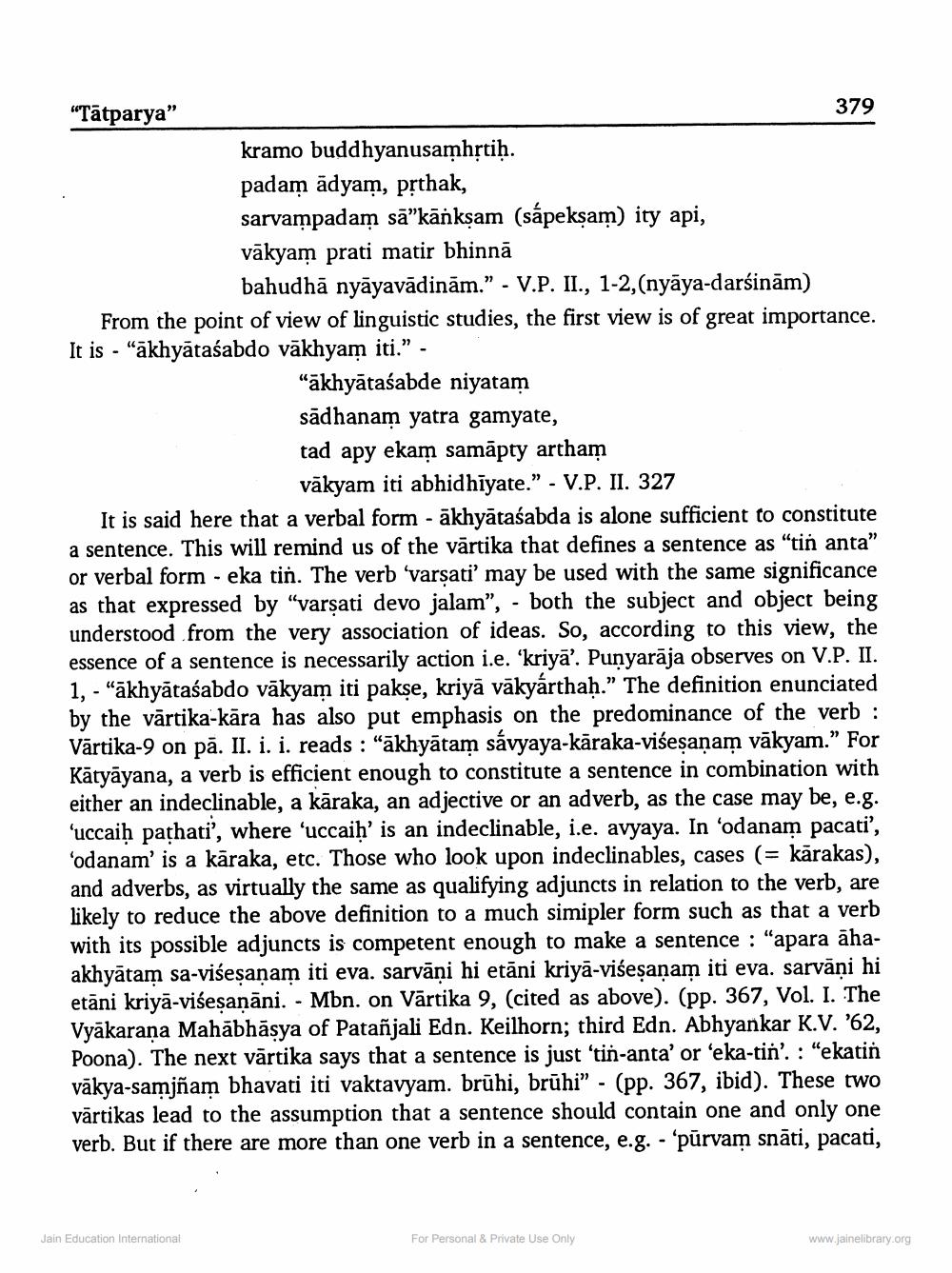________________
"Tātparya”
379 kramo buddhyanusamhștiḥ. padam adyam, prthak, sarvampadam sā”kānksam (sápeksam) ity api, vākyam prati matir bhinnā
bahudhā nyāyavādinām.” - V.P. II., 1-2, (nyāya-darsinām) From the point of view of linguistic studies, the first view is of great importance. It is - "ākhyātaśabdo vākhyam iti.” -
"ākhyātaśabde niyatam sādhanam yatra gamyate, tad apy ekam samāpty artham
vākyam iti abhidhīyate.” - V.P. II. 327 It is said here that a verbal form - ākhyātaśabda is alone sufficient to constitute a sentence. This will remind us of the vārtika that defines a sentence as "tin anta" or verbal form - eka tin. The verb 'varșati' may be used with the same significance as that expressed by “varşati devo jalam”, - both the subject and object being understood from the very association of ideas. So, according to this view, the essence of a sentence is necessarily action i.e. ‘kriya'. Punyarāja observes on V.P. II. 1, - "ākhyātaśabdo vākyam iti pakşe, kriyā vākyárthah.” The definition enunciated by the vārtika-kāra has also put emphasis on the predominance of the verb : Vārtika-9 on pā. II. i. i. reads : "ākhyātam sávyaya-kāraka-visesanam vākyam.” For Kātyāyana, a verb is efficient enough to constitute a sentence in combination with either an indeclinable, a kāraka, an adjective or an adverb, as the case may be, e.g. ‘uccaiḥ pathati', where 'uccaih' is an indeclinable, i.e. avyaya. In ‘odanam pacati', ‘odanam' is a kāraka, etc. Those who look upon indeclinables, cases (= kārakas), and adverbs, as virtually the same as qualifying adjuncts in relation to the verb, are likely to reduce the above definition to a much simipler form such as that a verb with its possible adjuncts is competent enough to make a sentence : "apara āhaakhyātam sa-višeṣaṇam iti eva. sarvāṇi hi etāni kriya-viśesaņam iti eva. sarvāṇi hi etāni kriyā-visesanāni. - Mbn. on Vārtika 9, (cited as above). (pp. 367, Vol. I. The Vyākarana Mahābhāsya of Patañjali Edn. Keilhorn; third Edn. Abhyankar K.V. '62, Poona). The next vārtika says that a sentence is just 'tin-anta' or 'eka-tin'. : “ekatin vākya-samjñam bhavati iti vaktavyam. brūhi, brūhi” - (pp. 367, ibid). These two vārtikas lead to the assumption that a sentence should contain one and only one verb. But if there are more than one verb in a sentence, e.g. - 'pūrvam snāti, pacati,
Jain Education International
For Personal & Private Use Only
www.jainelibrary.org




